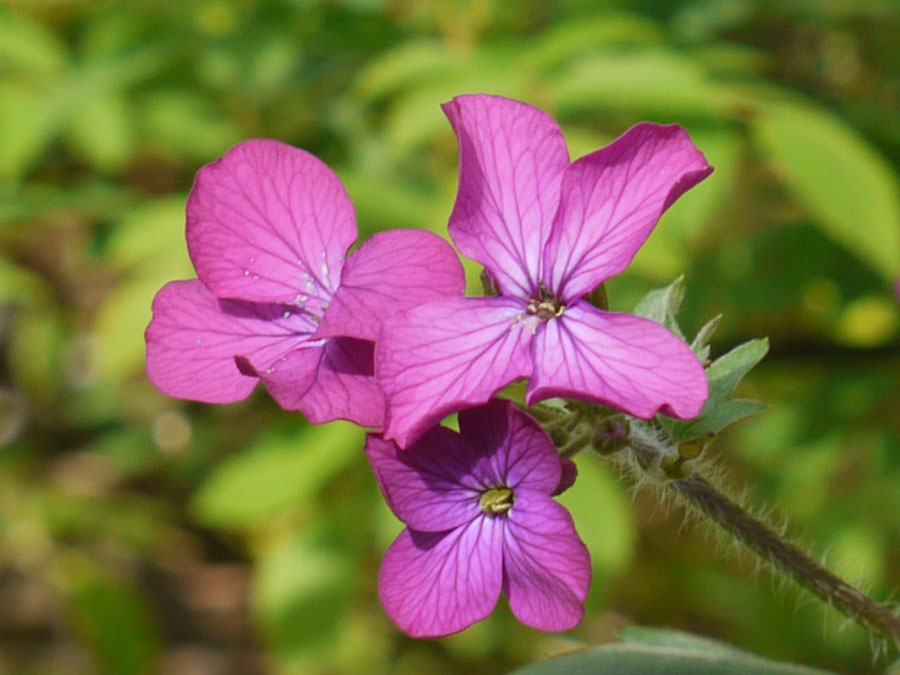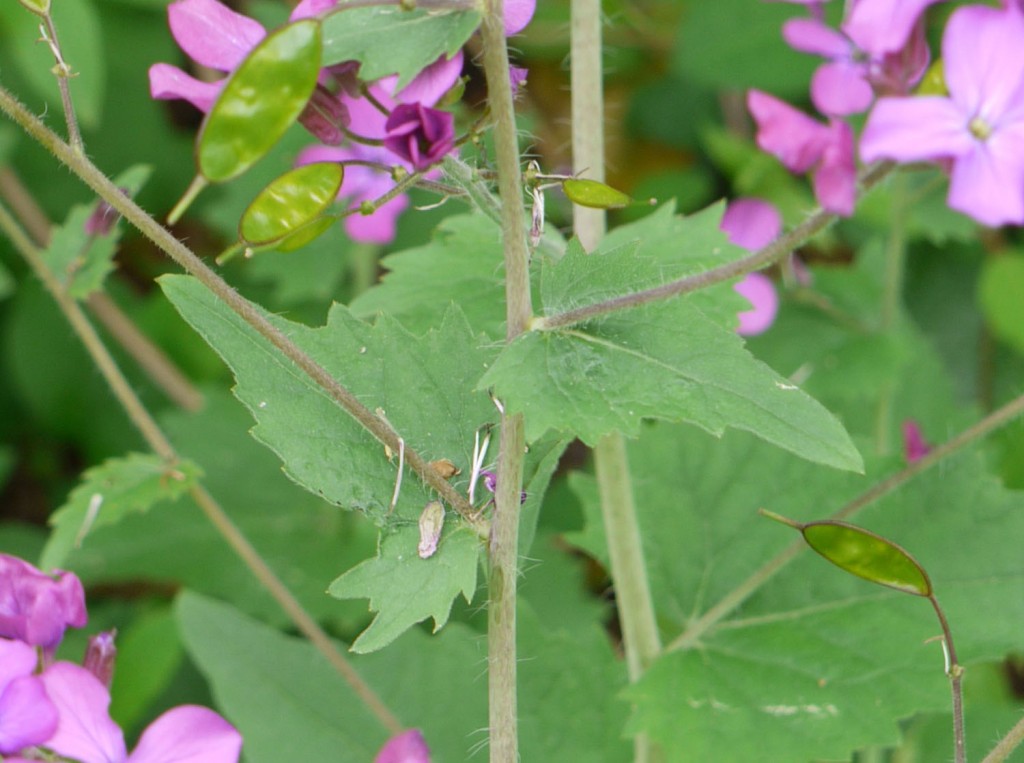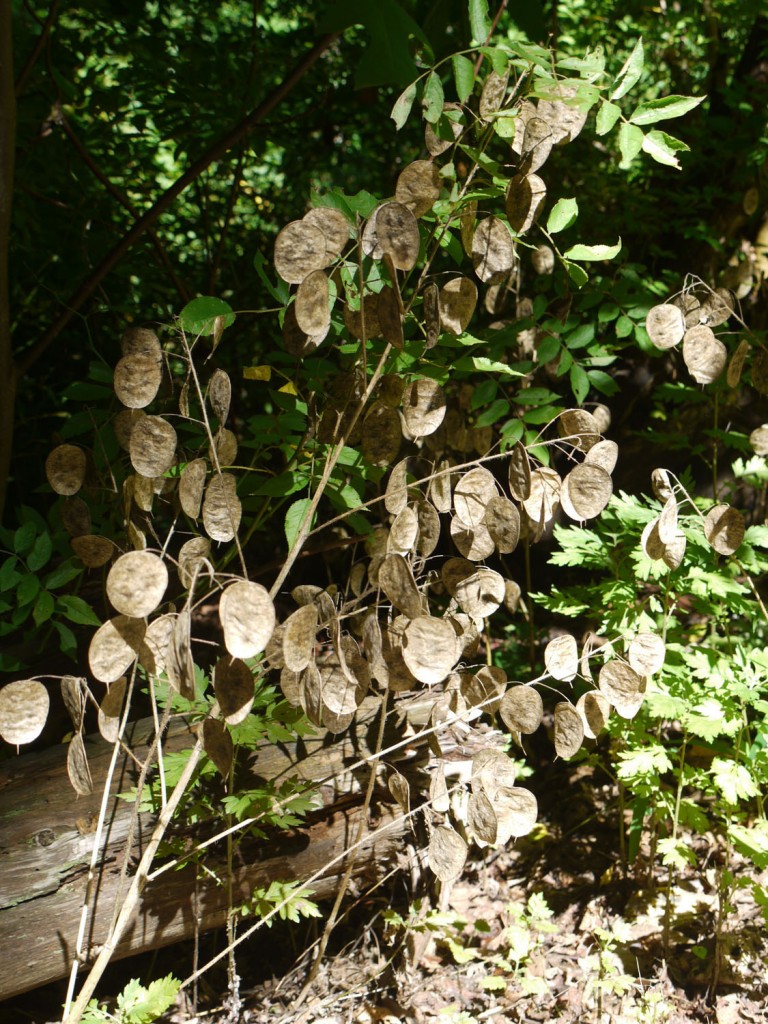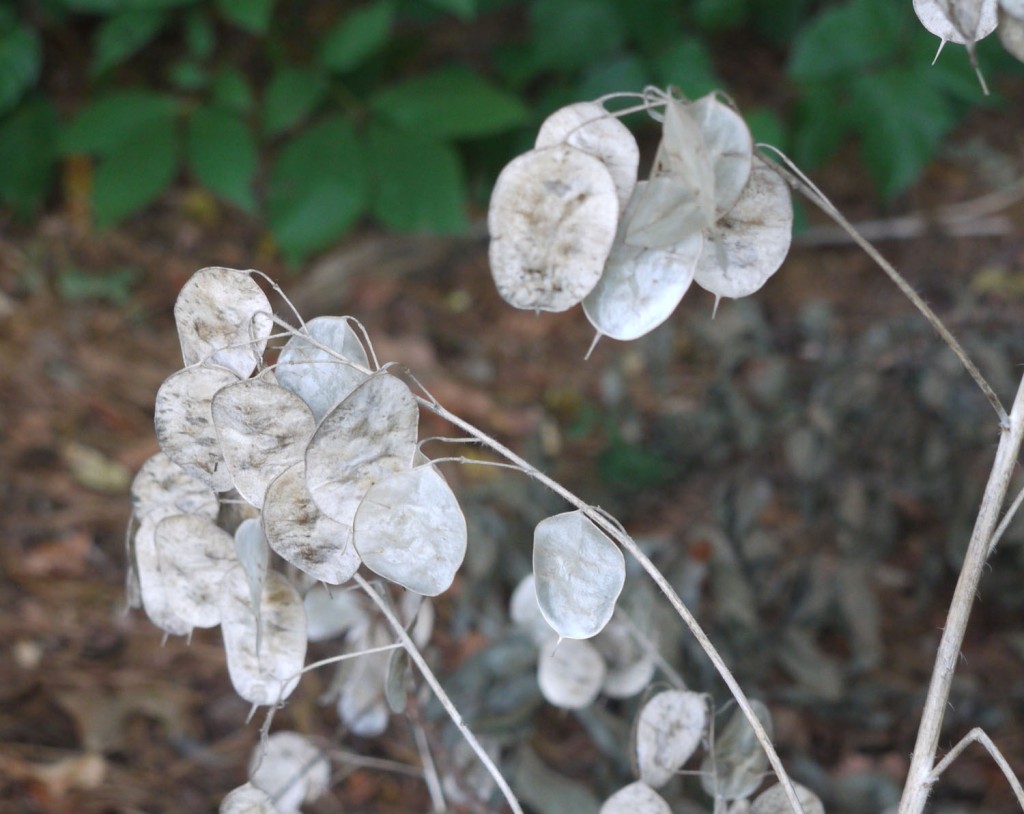This plant can be found scattered throughout North America. When you know its names (common and scientific), post them in a comment below. Also. . . share any personal story you have about this plant.
ANSWER (subsequently added to this post to facilitate the “search” function for these images): Money plant (Lunaria annua)










oooh! I am pretty sure this is a Money Plant–Lunaria annua.
I have an experience with it =) I was just beginning to learn about plants and such last year while were were revamping our yard. There was a pretty-ish mound of green leaves, wasn’t too big and added a touch of color so we left it in place.
This year though, suddenly– the mound BLOOMED!! OMG gorgeous flowers. Took me a while and the help of some online friends to ID it as a money plant..
It has grown up, and up, and has fallen over, laden with silvery coin seed discs.
I cant wait to gather the discs and have a few more of my mystery mounds !
Ruth, you are correct. This is Money plant (Lunaria annua). Another common name for it is Honesty.
I love your story of your “mystery mound.”
When I drive to work I enjoy seeing groups of these gorgeous purple blooms in early spring.
I love the way that you have displayed multiple images of your mystery plant showing many parts of the plant. This method of documenting a plant is vital to the growth of the use of images as help for the person who needs or simply wants to identify the plant. One, or two, or even three images is simply not enough in many cases to accurately identify plant, or for that matter to learn the vocabulary. The work of Drs. Kirchoff and Baskauf
(http://www.cals.ncsu.edu/plantbiology/ncsc/vulpia/pdf/Baskauf_&_Kirchoff_Digital_Plant_Images.pdf ) provides a terrific model for what will one day be a number of virtual herbariums around the world that will put the power of plant identification in the hands of anyone who needs or wants it — whether they command the vocabulary or not. When those sites begin to grow and mature the botanists of the world — the Real People — will be able to make queries such as, “Show me a leaf from each of the species of the family Hypericaceae,” and within moments be rewarded by the screen appearance of all those leaves. Such a collection of plant images will revolutionize botanical field study. In my view the two sites of Dan Tenaglia (Missouri Flora and Alabama Flora) are the archetype of what a plant identification sited should be.
And surely this site is the archetype of a celebration of personal passion for the Kingdom of Plants. Congratulations! It is a most unique and beautiful gift to the rest of us who are also bewitched by the intricate beauty of our woods and prairies.
Cathy had some difficulty posting a comment. This is what she wanted to post:
Yes – I know this as Lunaria (no other designation), also. But thought it was a perennial/ perhaps a reseeding biennial? I have come across Money Plant as the most often used common name, also Silver Dollar plant, and occasionally “Honesty”. Was told that some consider the flowers to be inconsequential compared to the value of the dried seed pods for winter dried flower arrangements. Once the stalks and pods are dried the outer “paper” (and seeds) can be carefully removed (by gently rubbing between your fingers) to leave only the translucent and slightly shiny ” Moon”.
I find it VERY tricky to identify, because the bottom leaves look different to me than the upper leaves, so I never know if I have pulled it up by mistake. It did okay reseeding itself for several years, and then it seemed to die out. I think the spot became too shady, because the nearby trees grew taller. It has reappeared as a volunteer, and I am eager to keep it and have more, because I think it is interesting in all its stages all through the growing season and pretty in the winter indoors and out.
Also, regarding the identification the close up photo shows the stem as slightly hairy, which I never really noticed. Perhaps under my bare hands the feel is slightly “rough”, which might help me.
I still need help with the earliest stages of growth so I can recognize this as a Keeper! I must also add that I appreciate the multiple photos, and that even more would be helpful.
For me in CT the bloom time is sometime in May, I think, and now , July 7, the seed pods are mostly green, a few turning brown enough to ” peel”. As you separate the pod, there is a brown outer covering with (in this case three) seeds stuck to it on both sides of the shiny “moon”.